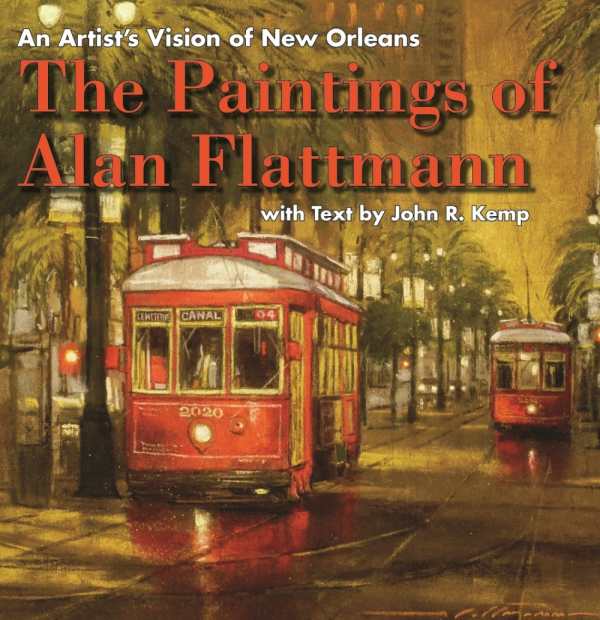
An Artist's Vision of New Orleans
The Paintings of Alan Flattmann
Flattmann remains tied to his colorful birthplace and portrays his fascination with its unique moods and moments.
Born in New Orleans in 1946, Alan Flattmann studied at the McCrady School of Art in his native city and began his commercial career doing tourist portraits in Jackson Square. Flattmann’s latest collection of works, An Artist’s Vision of New Orleans: The Paintings of Alan Flattmann, is a visual tour of the city, with accompanying narrative by writer John R. Kemp. Kemp, another New Orleans native, provides a historical and cultural backdrop for Flattmann’s scenes and landscapes, including a languid Tennessee Williams quote which describes the city so well: “Don’t you just love those long rainy afternoons in New Orleans when an hour isn’t just an hour—but a little piece of eternity dropped into your hands?”
Equally adept with pastels, watercolors, and oils, Flattmann seems able to vary his style to suit the subject matter and his perception of it. Color palettes are sometimes rich and dramatic, yet there are as many ethereal, muted, or earthy tones. Early influences from masters Corot, Whistler, and Degas are evident, as are suggestions of French artist Gustave Caillebotte or American impressionist Willard Leroy Metcalf.
The book is divided into chapters that reflect the more conventional aspects of New Orleans, such as “Restaurants and Cafés” and “Preservation Hall and Jazz.” Flattmann does not shy away from these traditional subjects. Fine dining at Galatoire’s, carriage rides, jazz bands, and wrought-iron balconies are the city’s more familiar images, and Flattmann fulfills his role as a New Orleans artist by including them all. He even exalts them at times, such as in the dreamlike Blue Twilight at the Cathedral, which takes a view glimpsed by countless visitors and imbues it with near-mystical qualities.
It is through his more personal connection to his hometown, however, that Flattmann best distinguishes himself, such as in the flamboyant stylings of his Sudan Marching Club or the solemnly crimson The Red Tuba. The waiters on break at Napoleon House, longshoremen, fruit vendors, streetcars named Desire, and St. Charles, late nights at the Clover Grill, or dusky Decatur Street—these are elements of not just a travel destination, but of the real New Orleans.
In his introduction, Kemp notes how New Orleans struggles with “pervasive crime and poverty” and that in 2005, the world witnessed the devastation of Hurricane Katrina. Nonetheless, Alan Flattmann seems to calmly believe in the past, present, and future of New Orleans and to want to share that faith with us all.
Reviewed by
Meg Nola
Disclosure: This article is not an endorsement, but a review. The publisher of this book provided free copies of the book to have their book reviewed by a professional reviewer. No fee was paid by the publisher for this review. Foreword Reviews only recommends books that we love. Foreword Magazine, Inc. is disclosing this in accordance with the Federal Trade Commission’s 16 CFR, Part 255.
